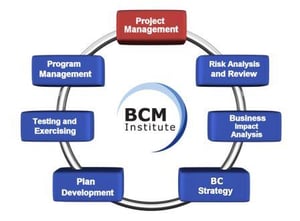Overview
This series is part of the reading for professionals designated to be in charge of BCM embarking on their BCM implementation. The approach primarily starts with the development of BCM competency for the entire team [refered to as BU BCM Coordinator] but the time utilization is fully optimised.
It ensures that the using a combination of training with professional support from personalized consulting support to develop, implement and finalize its BCM program for an organisation.
When incorporating WSQ as part of the overall BCM project, certain information is required to kick start a working framework for the engagement.
The training provided to the BU BCM Coordinators are based on the BCM competency model as published and certified by the WSQ or the SkillsFuture, it is a national credential system that trains, develops, assesses and certifies skills and competencies for the workforce.
 We need to highlight that any additional work which is not WSQ training related will be implemented by BCM Institute's associated partners such as GMH Continuity Architects.
We need to highlight that any additional work which is not WSQ training related will be implemented by BCM Institute's associated partners such as GMH Continuity Architects.
 Before we start the project with your organisation, a working framework is developed and it includes the standard project management features.
Before we start the project with your organisation, a working framework is developed and it includes the standard project management features.
1. Engagement Letter
- A letter of acceptance to BCM Institute or purchase order from your organisation to confirm the project and training.
2. Register Your Organisation with
- Register your organisation to the Skills Future SingaporePortal to apply for and claim training grants for course fees and absentee payroll.
3. Participant List
- Provide a participant list including information on nationality and age range, both required by WSQ for calculation of grant amount
- Document the department that the participants belong to, his job role and designation, the name of his reporting manager, and his/her contact details.
4. Organization Structure
- Provide a structure of the organisation showing the business units and sub-units, and if available, the acronyms for these units.
- Provide any information on the makeup of any existing crisis management and emergency response teams.
5. Schedule for Project Tasks
- Develop and agree on the schedule for project tasks, including workshops, template submissions, assessments and presentations.
- Note that it is a prerequisite for WSQ funding to attain a minimum attendance rate and to pass the assessments, it is important that all participants attend the workshops and assessments.
6. Related Organisational Policy and Framework
- Make available any company policy and/or framework related to risk management to the facilitator and/or consultant who will ensure that any new policies and procedures to be developed during the project will align with these existing ones.
Stage Deliverable
The result of this Startup phase (Project Management Phase) would be a project plan with clear objectives, schedules and deliverable, as well as defined roles and responsibilities for the project manager, participants and the consultant.
A kick-off meeting should then be arranged to brief Management on how the project plan and how the project would be implemented.
Now that the initiation of the BCM project is underway with the necessary documentation to be completed for the necessary application of the WSQ funding, it is time to "Developing BCM Structure and Framework."![]()



